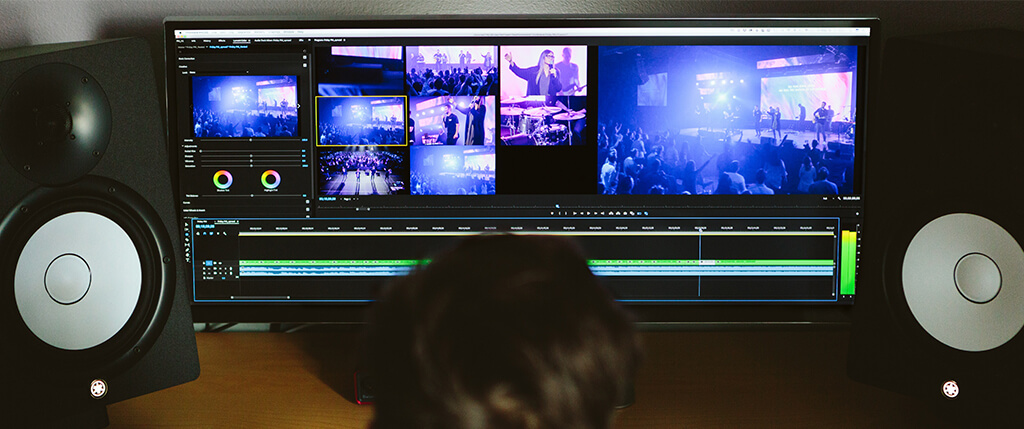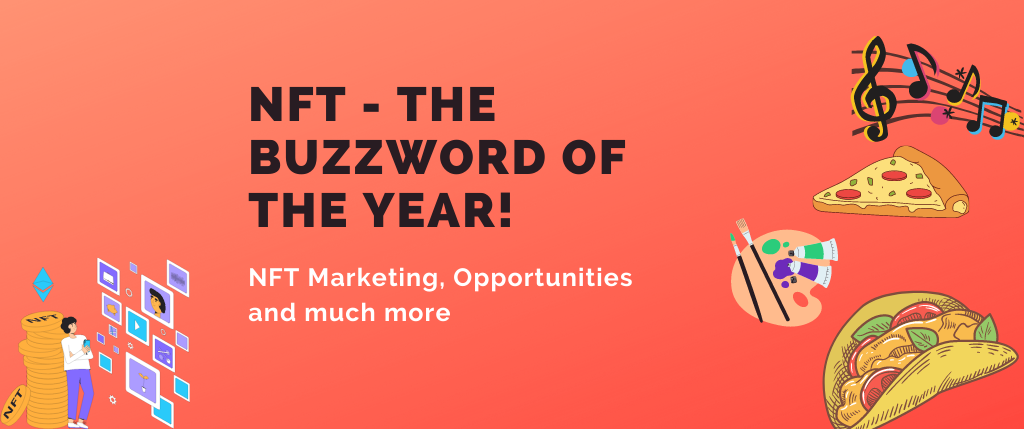Write Without Fear and Edit Without Mercy – This quote summarises all the work to be done in the post-production stage. There are a lot of things that one needs to put in place before rendering out the final version of the video – numerous edits, a bunch of sound trials to get the fitting music and background score. Add to this colour grading so as to get you an even look and feel throughout the video.
In this blog, you will discover the 6 stages of the post-production pipeline that are necessary to create a share-worthy video.
Step 1: Get Organized
Get all the clips, sounds, footages that you have shot organized in one place. Get all the different members of your team to commit to a folder structure and stick to it till the end. Did I mention, you need to take a back-up before starting. Also, a backup of a backup is a great idea.
Once you got all the data in one place. The task is to divide the work in a sequential manner to the people involved in creating the film. This ranges from the editor, sound recordist, music arranger, actors/clients (for voice-over), animator….
This calls in for a detailed brief, where the agenda is to get the entire team on the same page i.e. each person understands their scope of work and also what the team needs to accomplish at the end of the post-production.
Step 2: Get Set Edit
As soon as the data is organized on the drive. Start organizing it visually on a timeline – Editing is a crucial step towards getting through with the post-production stage soon. First up – Edit broadly to establish a flow based on the script.
The next main agenda would be to render out the scratch edits and distributing amongst the sound guys and the visual effects/animation teams. This allows them to spice up the visuals by adding graphics and add to the mood of the film with the help of sound effects.
Editing is a constant process throughout the post-production cycle. It’s all about trying out the various possibilities and gathering as much feedback to work on. The movie really comes to life on the editing table. It is, for this reason, one needs to involve the director as well as some of the other stakeholders at regular intervals in the process.
Step 3: Add the Visual Magic
Motion Graphics can really simplify and drive the point home when it comes to ridiculous amounts of data to be visualized. Also, titling is an important step that can be accomplished. Some important key things to keep handy would be important dates if highlighted in the video, Designations of Stakeholders featuring onscreen, Names of the departments/products/services… The animator will add the logos or idents onto your footage – resulting in branded content. In case of an interview – this is where the lower-thirds or the titles including designations come in as an overlay on top of the video.

Please keep in mind that the graphics team is working on an edited piece vs raw footage. This implies that if a shot is going to be on screen for 15 seconds then the animator works only on the 15 seconds. The actual length of the shot might have been 30+ seconds also. The process of giving a rough edit to the animator is known as a Scratch Edit – not the crisp finished one of dot 9.5 seconds but something close to 10 seconds helps in saving render time – which is a major cost when it comes to animation.
Some software that the editors love to work with –
- Adobe After Effects for motion graphics
- Adobe Premiere Pro for editing.
In case there are any visual effects to be added – one can ask the Video agency to provide past work of the artists to verify the quality to be expected. Please make note that good visual effects take time and money. In case of adding basic effects, the editor might help you out. But in case, of specialized effects that may be needed to drive the point home. Don’t compromise on quality.
Step 4: Choosing a Background Score
Good music helps in establishing a high emotional connect with your audience. Having said that based on the story one can decide with the video agency whether stock sound can be bought or do we want to create music from scratch.
Stock music is widely available online for a small price and can really speed up the process. Based on the theme of the video you can jump into various genres quickly like Inspirational, Motivational, Rising, Dramatic… Maybe a variation of 2-3 should be optimal for a brand film.
Tip: Don’t assume anything. Select a few soundtracks and send the link to the stakeholders who can for sure tell you if you are on the right track. In case they have a different view – get your search aligned to the brief and again show them the options and then finalize | buy and use.
Your film might require voice overs – head on to www.voices123.com – they are an international community of voice talent that you can connect with and produce high-quality voice-overs. You have access to various accents, ethnicities and voice talent that will surely help you in finding the right voice talent.
One very important thing, you don’t want to land up with a lawsuit so double check for the copyright claims on all the music you use. If you have your original track then well and good. If you are struggling with identifying copyright, please consult a professional before using any material.
Use the following sites that offer royalty-free background music and sound effects :
- FreeStockMusic.com
- Incompetech.com
- AudioMicro.com
- RoyaltyFreeMusic.com
Step 5: Colour Grading
What separates amateur video makers to a Genuine Professional video talent is their creativity, technical knowledge and a commitment to creating a world-class product. Over the years, color grading has become the standard in Hollywood and now in any and every video that you see even uploaded on Youtube.

In our case, B2B companies require a certain set of sophistication to generate thought leadership and build trust. Therefore, Colour Grading is required.
Color grading is establishing and standardizing the overall look of the film so as to create a unified viewing experience.
Step 6: Finishing and Mastering
This is where your video will get it’s finishing touch. Even out all the sounds and match all the tonalities. Keeping that in mind imagine this. You are done with your video and then you show it to your client. The client says he is satisfied but wants “xyz” part to be added. Now you don’t definitely don’t want to go through the entire process again. So what do you do?
It simply means if you have a large set of graphics and you hit play. It has to play back in real time. This helps in just seeing the final clip and not wait for the full thing.
Hero Box can also be made by grouping a few software. For example, your director might suggest that why don’t we just use the previously used software? You can do that. The only flaw with that is when the client is on your head managing a bunch of software can become tedious. If your team is big who can manage the workload, you need not get the software.
After this stage, go through your video again. Review the title tags, end tags, logos, etc. Your call to action should be loud and clear. Once the video is finalized with no more edits, your creative director has to extract the video in its highest quality. The video should be accessible on all the devices and platforms at its best resolution.
The post-production process is a crucial part of the video pipeline. As an individual, it seems daunting as there might be too many unknowns. This is where working with an experienced Video agency comes to play. Working on a video is all about being transparent about the process so at any point of time we can take an informed decision as a team.
Transparency and clear communication make it rewarding for everyone involved. As the film gets ready you need to start with the plans to promote the video to get as many eyes as possible across all the channels.





